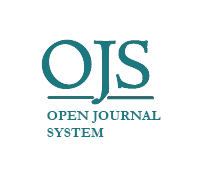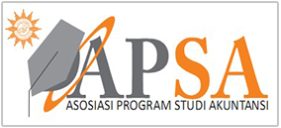The Effect Of Intellectual Capital Efficiency On Company’s Market Value With Company’s Financial Performance As Intervening Variables
DOI:
https://doi.org/10.22219/jrak.v11i2.15116Keywords:
Financial Performance, Intellectual Capital, Market Value, Service CompanyAbstract
The purpose of this study is to investigate empirically the relation between the company’s intellectual capital efficiency and company’s market valuation with company’s financial performance as intervening variables. This study using data from the Indonesia listed service companies. The samples of this study was 109 companies. Pulic’s Value Added Intellectual Coefficient (VAICTM) used as the efficiency measure of company’s intellectual capital. The authors construct regression models to examine the relationship between company’s intellectual capital efficiency and company’s market valuation and explore the relation with company’s financial performance as intervening variables. The results support the hypothesis that company’s intellectual capital has an affect on company’s market valuation. In addition, the authors found that company’s financial performance has a role as full mediator on the relation between the company’s intellectual capital efficiency and company’s market valuation. This study results can be used as a reference for companies’ management to improve their efficiency of the intellectual capital so the company's financial performance and value can be improved.
Downloads
References
Bontis, N., William Chua Chong, K., & Richardson, S. (2000). Intellectual capital and business performance in Malaysian industries. Journal of Intellectual Capital, 1(1), 85–100. https://doi.org/10.1108/14691930010324188
Brigham, E. F., & Houston, J. F. (2014). Dasar-Dasar Manajemen Keuangan Edisi 11 Buku 1. In Salemba Empat Jakarta.
Chang, L., & Birkett, B. (2004). Managing intellectual capital in a professional service firm: Exploring the creativity-productivity paradox. Management Accounting Research, 15(1), 7–31. https://doi.org/10.1016/j.mar.2003.10.004
Chen, M. C., Cheng, S. J., & Hwang, Y. (2005). An empirical investigation of the relationship between intellectual capital and firms’ market value and financial performance. Journal of Intellectual Capital, 6(2), 159–176. https://doi.org/10.1108/14691930510592771
Dendawijaya, L. (2003). Manajemen Perbankan. Ghalia Indonesia, Jakarta.
Fahy, J., & Smithee, A. (1999). Strategic Marketing and the RBV of the Firm. Academy of Marketing Science Review.
Firer, S., & Mitchell Williams, S. (2003). Intellectual capital and traditional measures of corporate performance. Journal of Intellectual Capital, 4(3), 348–360. https://doi.org/10.1108/14691930310487806
Ghozali, I., & Chariri, A. (2007). Teori Akuntansi Edisi 3. In Badan Penerbit Universitas Diponegoro Semarang.
Grant, R. M. (1996). Toward a knowledge-based theory of the firm. Strategic Management Journal, 17(S2), 109–122. https://doi.org/10.1002/smj.4250171110
Hair, J. F., Ringle, C. M., & Sarstedt, M. (2013). Partial Least Squares Structural Equation Modeling: Rigorous Applications, Better Results and Higher Acceptance. In Long Range Planning. https://doi.org/10.1016/j.lrp.2013.01.001
Irawan, D., Bastian, E., & Hanifah, I. A. (2019). Knowledge Sharing, Organizational Culture, Intellectual Capital, and Organizational Performance. Journal of Accounting and Investment, 20(3). https://doi.org/10.18196/jai.2003128
Kholmi, M., & Wahyuni, E. D. (2020). Analisis praktik pengungkapan intellectual capital studi pada perusahaan sub sektor industri otomotif. 3(2), 191–199. https://doi.org/10.22219/jaa.v3i2.13227
Kianto, A., Hurmelinna-Laukkanen, P., & Ritala, P. (2010). Intellectual capital in service- and product-oriented companies. Journal of Intellectual Capital, 11(3), 305–325. https://doi.org/10.1108/14691931011064563
Lukviarman, N. (2006). Dasar-Dasar Manajemen Keuangan. Andalas University.
Nijssen, E. J., Hillebrand, B., Vermeulen, P. A. M., & Kemp, R. G. M. (2006). Exploring product and service innovation similarities and differences. International Journal of Research in Marketing, 23(3), 241–251. https://doi.org/10.1016/j.ijresmar.2006.02.001
Penrose, E. T. (1959). The Theory of the Growth of the Firm. New York: John Wiley & Sons Inc. In New York: John Wiley & Sons Inc.
Pulic, A. (1998). Measuring the performance of intellectual potential in the knowledge economy. The 2nd" World Congress on the Management of Intellectual Capital".
Pulic, A. (1999). Basic Information on VAICTM‖. Www.Vaic-on.Net.
Roos, J., Roos, G., Dragonetti, N. C., & Edvinsson, L. (1997). Intellectual Capital. Palgrave Macmillan UK. https://doi.org/10.1007/978-1-349-14494-5
Rupert, B. (1998). The measurement of intellectual capital. Management Accounting: Magazine for Chartered Management Account.
Solikhah, B., Abdul Rohman, H., & Meiranto, W. (2010). Implikasi Intellectual Capital terhadap Financial Performance, Growth, dan Market Value; Studi Empiris dengan Pendekatan Simplistic Specification. Makalah Simposium Nasional Akuntansi XIII Purwokerto, 1–29. https://doi.org/10.1017/CBO9781107415324.004
Sucipto. (2003). Penilaian Kinerja Keuangan. Jurnal Akuntansi, Universitas Sumatera Utara.
Sunarsih, N. M., & Yuria Mendra, N. P. (2012). Pengaruh Modal Intelektual terhadap Nilai Perusahaan dengan Kinerja Keuangan sebagai Variabel Intervening pada Perusahaan yang Terdaftar di BEI. Journal of Chemical Information and Modeling, 53(9), 1689–1699. https://doi.org/10.1017/CBO9781107415324.004
Tan, H. P., Plowman, D., & Hancock, P. (2007). Intellectual capital and financial returns of companies. Journal of Intellectual Capital, 8(1), 76–95. https://doi.org/10.1108/14691930710715079
Ulum, I., Ghozali, I., & Chariri, A. (2008). Intellectual Capital Dan Kinerja Keuangan Perusahaan ; Suatu Analisis Dengan Pendekatan Partial Least Squares. Simposium Nasional Akuntansi XI, 19(19), 23–24.
Downloads
Published
Issue
Section
License
Copyright (c) 2021 Jurnal Reviu Akuntansi dan Keuangan

This work is licensed under a Creative Commons Attribution 4.0 International License.

Jurnal Reviu Akuntansi dan Keuangan is licensed under a Creative Commons Attribution-NonCommercial-ShareAlike 4.0 International License.
Authors who publish with this journal agree to the following terms:
- Authors retain copyright and grant the journal right of first publication with the work simultaneously licensed under a Creative Commons Attribution-NonCommercial-ShareAlike 4.0 International License that allows others to share the work with an acknowledgement of the work's authorship and initial publication in this journal.
- Authors are able to enter into separate, additional contractual arrangements for the non-exclusive distribution of the journal's published version of the work (e.g., post it to an institutional repository or publish it in a book), with an acknowledgement of its initial publication in this journal.
- Authors are permitted and encouraged to post their work online (e.g., in institutional repositories or on their website) prior to and during the submission process, as it can lead to productive exchanges, as well as earlier and greater citation of published work (See The Effect of Open Access).










